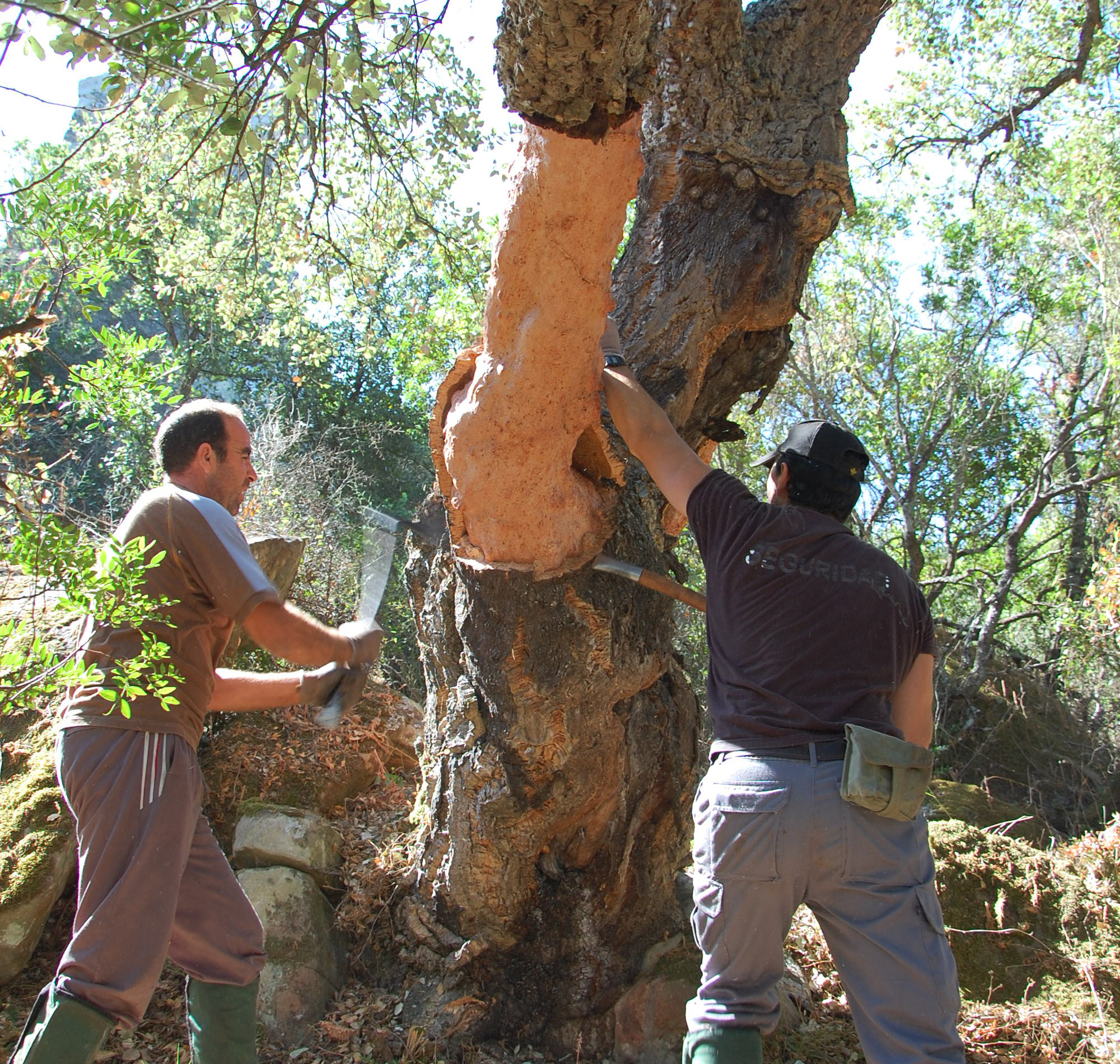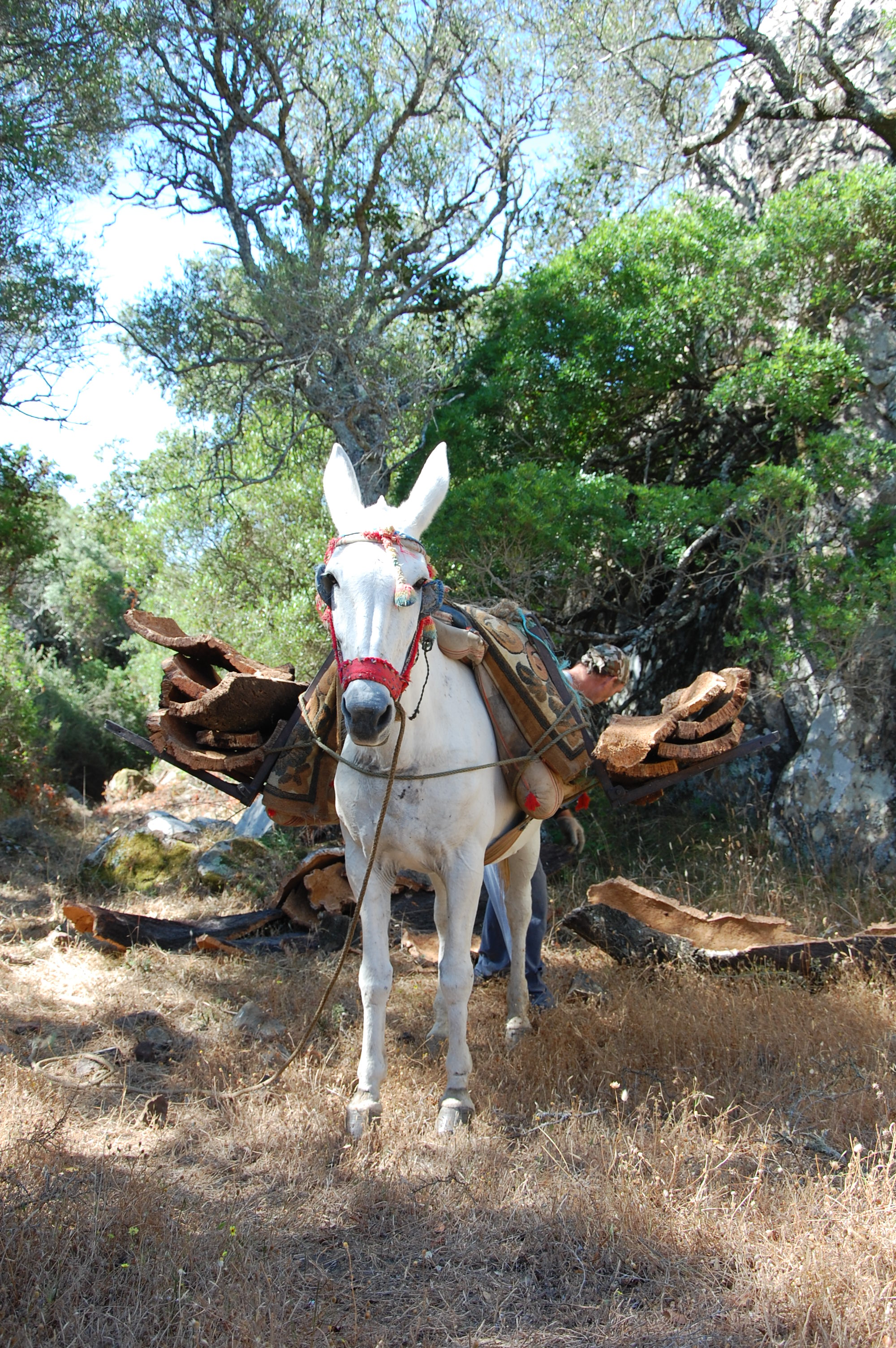Cork Harvest
If you go down to the woods in summer you’ll meet a real corker
He emerged from the undergrowth, tanned and taut of torso, his axe glinting in the sunlight and I wondered whether I was encountering my first bandit. Los Alcornocales Nature Park, the world’s largest cork forest, used to be bandit country.
In decades past, smugglers ran contraband up from Gibraltar through these woodlands via mule trains. I could hear one hee-hawing close by. But he turned out to be a cork harvester, not a bandit, and he had designs on the trees, not me.
Thwack! With a few deft swings of his axe he makes horizontal and vertical cuts in the gnarled grey trunk to prise the bark free, taking care not to harm it. Kerthud! The bark slips to the ground in two perfect halves, laying bare the raw red wood beneath. Strip trees, striptease ... it looks that easy!
Two skilled cork extractors can process one tree in under five minutes. Their target is 2,000 kilos of cork a day. That’s a lot of cork, which doesn’t weigh much, but not a lot of money. They’ll earn around €100 per man for seven hours of back-breaking work and it’s a short season. Just June and July.
But the working conditions are good: fresh air and sun-dappled shade in an enchanted forest that stirs childhood memories of Winnie the Pooh pottering in the Hundred Acre Wood. Piglet would have a field day in autumn, when the park is full of ‘haycorns’ – the acorns that also fatten Andalucia’s jamon iberico pigs.
Our guides – and you need them – were busy on their mobile phones for an hour tracking the precise location of these arboreal artisans. We followed them, clambering over boulders and dodging low-hanging branches. But it’s hard to keep up – they work fast and the dry shale underfoot is slippery unless you’re a mule. Wear hiking boots and maybe bring a stick.
Cork oak artisans have personal muleteers to gather up the cork after them. These guys’ muleteer resembled a bandit in his bandana. His mules, waiting patiently in the shade for their next load, looked well cared-for in their hand-embroidered bridles and blinkers.
We followed the mule train to a clearing in the forest called the ‘patio’ where the cork is graded and weighed on a giant set of scales. Although only 15% ends up in wine bottles, cork stoppers bring in 66% of the revenue – an impressive €2 billion for Spain’s coffers annually.
The rest of it might end up at NASA in space rocket heat shields, or at Lords in the core of cricket ball. Lower grade cork goes into fashion shoes. This is just the start of its journey.
ℹ️ Further information: www.centrobttalcornocales.com (in Spanish only)
We paid €10 in 2017 to go on this corker of a hiking trip.
Although you take your own car, the price includes accident insurance, coffee and a tostada at a local venta and great company.









